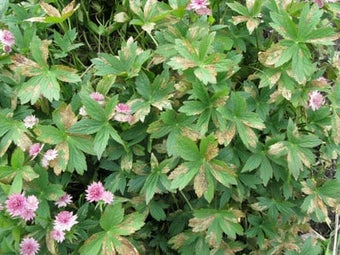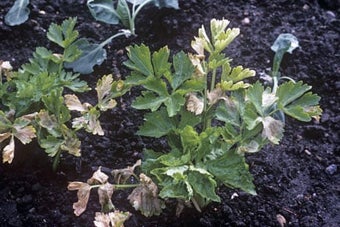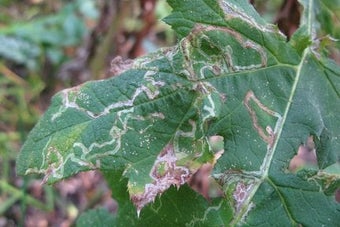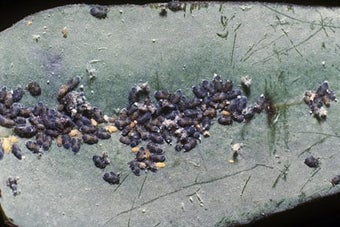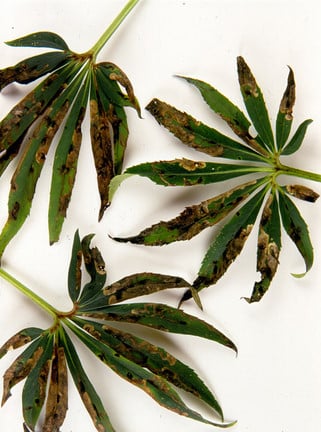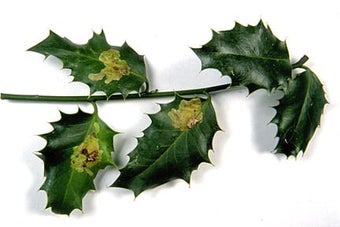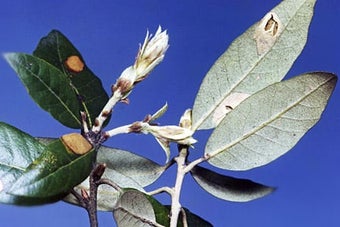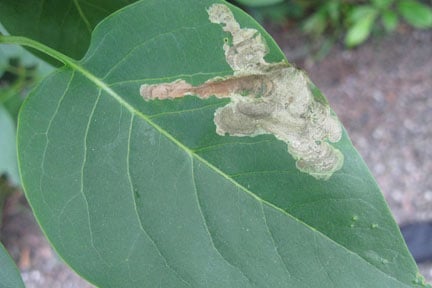
Quick facts
Common name - Lilac leaf-mining moth
Scientific name - Caloptilia syringella
Plants affected - Lilac (Syringa), privet (Ligustrum) and ash (Fraxinus)
Main symptoms - Brown blotches and curled leaves.
Caused by - Caterpillar of a moth
Timing - June to September
What is lilac leaf mining moth?
Adult lilac leaf mining moths have brindled white and brown forewings and the wingspan is 10-13 mm. The caterpillars feed within the leaves of host plants and are greenish white and up to 7 mm long when fully grown.
Images of the adult can be found on the UK moths website (external link).
Nearly 900 insects, including some flies, beetles, moths and sawflies create leaf mines as larvae in Britain. More information about some of these insects can be found at The leaf and stem mines of British flies and other insect.
Symptoms
The larvae initially cause a large blotch mine which soon goes brown and shrivels. Each mine is occupied by several caterpillars which later leave the mine and cause the leaf to become rolled up from the tip. The leaf roll is held in position by silken threads and the caterpillars complete their feeding inside. The caterpillars pupate in silken cocoons spun on the underside of the leaf and the second generation overwinter as pupae. This moth is part of the natural the host plants can support.
There are two generations a year with leaf symptoms occurring in June and August to September.
Managemnet
Leaf miners are a part of a healthy balanced garden ecosystem. Although the leaf mining may be considered unsightly, it is unlikely to affect the health or vigour of an established tree or shrub.
- Leaf damage from this moth is usually light and can be tolerated
- Most leaf mining species will have natural enemies including parasitoid wasps. Birds such as blue tits can sometimes open mines to consume the larvae within
- On privet hedges damage is often trimmed out
- If desired light populations on lilac trees can be dealt with by picking off and disposing of mined or rolled leaves, this can however, cause more damage than the leaf miner


